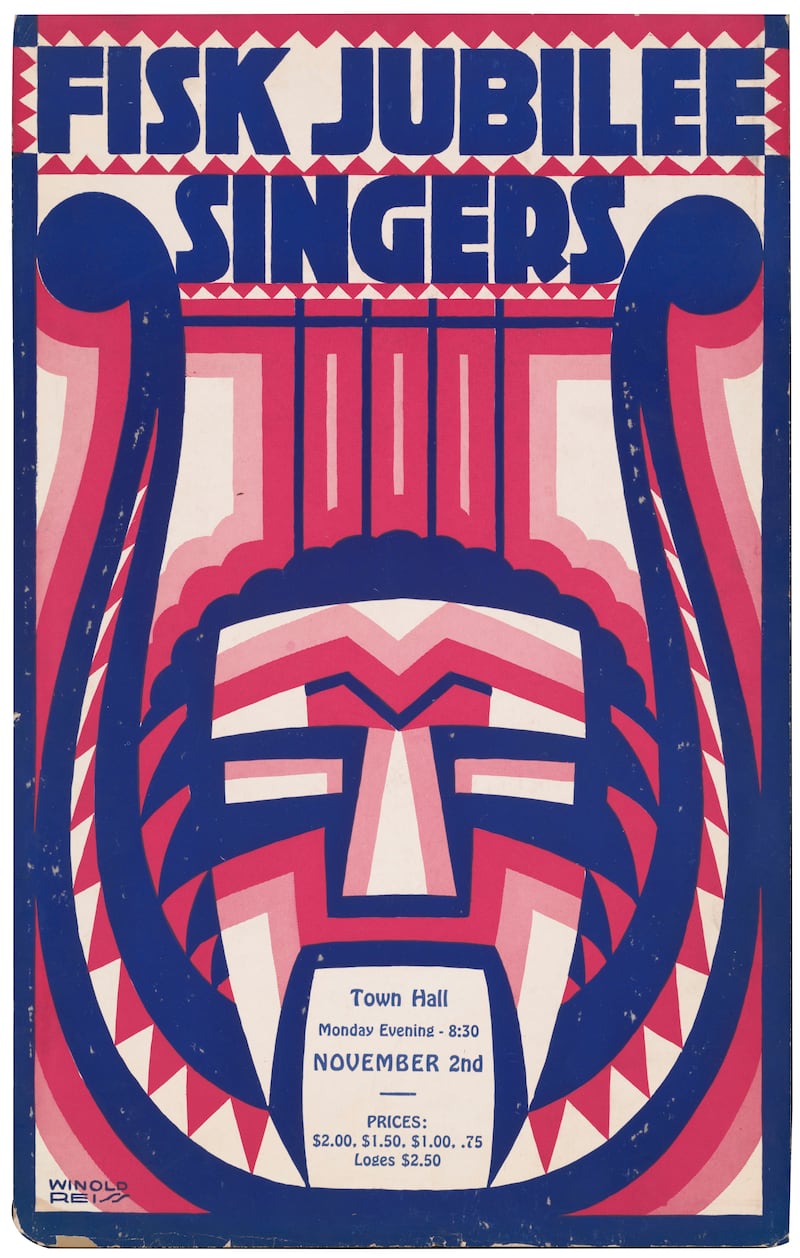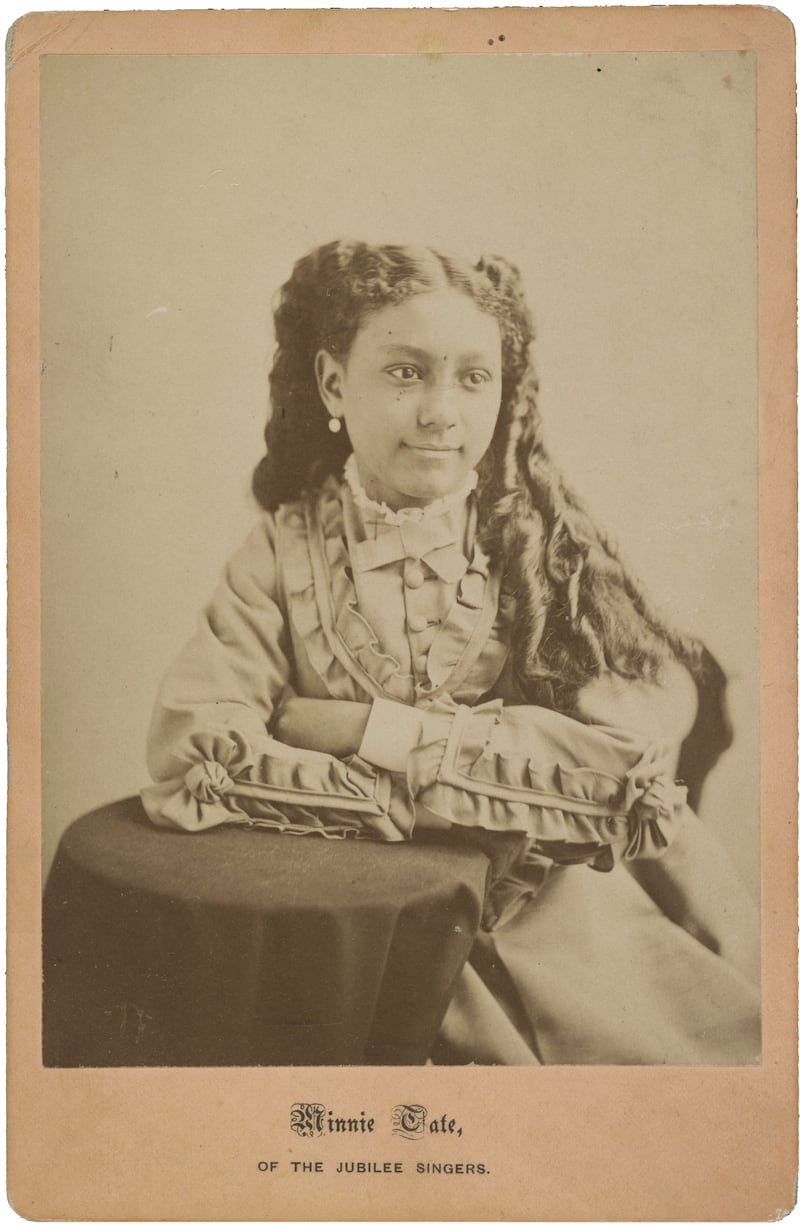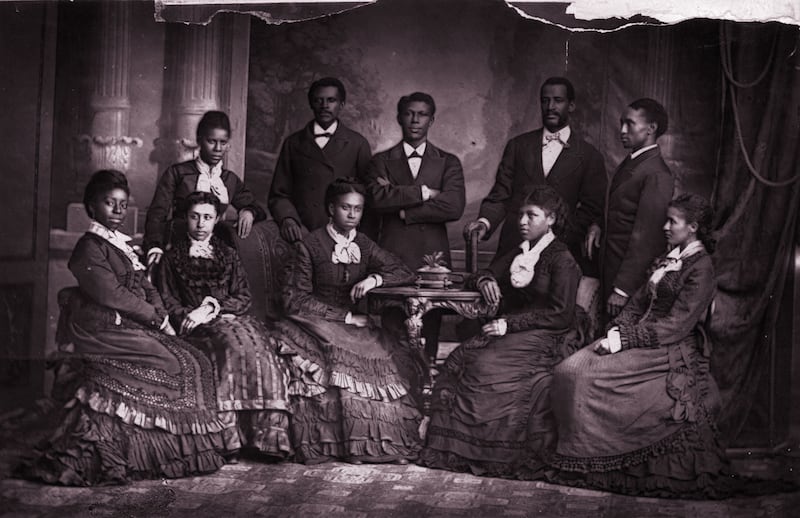Exactly 150 years ago a musical sensation swept through the north and east of Ireland. Crowds streamed. Venues heaved. Journalists raided their dictionaries for just the right words. The cause of the excitement was a troupe of African Americans called the Fisk Jubilee Singers, from Fisk University in Nashville, Tennessee. They were performing what were then called slave songs, also known as Negro spirituals, a type of music almost unknown outside of the United States at the time.
Their first Irish concert was at the Ulster Hall, in Belfast, on September 2nd, 1873, and over the next three years they performed more than 30 “services of song” at packed venues cross Ulster and Dublin. Though now largely forgotten, these concerts were Ireland’s first genuine, sustained exposure to the music of black America but this was about more than just music. The Jubilee Singers were on a mission to demolish racial barriers in the post-Civil War US and they came to Ireland as part of an international campaign to raise money and change minds. Somewhat to their surprise, among the minds they changed were their own.
Fisk University had been founded in 1866 by white evangelicals looking to provide a Christian education to formerly enslaved African Americans. Money was tight and conditions were poor, until a music teacher named George White hit upon the idea of forming some of the students into a travelling choir. They soon found their most popular songs were the songs of the southern plantations, stirring hymns about sweet chariots and rolling Jordans that often expressed a powerful urge toward freedom and salvation. By turning these songs into sophisticated concert pieces, the Jubilee Singers defined a genre and became stars. Mark Twain was a fan. So was president Ulysses S Grant.
In April 1873, the singers embarked on their first tour of the UK. In England, they sang for Queen Victoria, befriended prime minister William Gladstone and became, for a season, the toast of the philanthropic classes. They came to Ireland that September, performing not only at the Ulster Hall but also at the First Presbyterian Church in Derry, where the minister told the people not to applaud lest they profane the sacred space – an instruction that he had some trouble enforcing. Their final performance on this visit was on September 12th, 1873, a century and a half ago today. After more concerts in Britain, they returned to Nashville with enough money to build Fisk’s first permanent building, Jubilee Hall, which still stands as a monument to their first transatlantic triumph.
The Jubilee Singers soon embarked on a second overseas tour that brought them not only to the United Kingdom but also to the Netherlands, Germany and Switzerland. They visited Ireland twice more, in 1875 and 1876, spending considerable time in Dublin as well as Belfast, Derry and several smaller towns in Ulster. They might have gone elsewhere had they not been inclined, as evangelical Protestants singing largely devotional songs and relying on clerical patrons, to avoid Catholic areas and stick to Protestant ones.

There is some evidence that Catholics avoided them, too. The Catholic owner of Cork Opera House pronounced them a “humbug” and resisted booking them there and there were rumours of priests warning their flocks against attending their concerts. On at least one occasion, the singers stumbled head-on into Ireland’s internal quarrels: at the end of a performance at the Rotunda auditorium in Dublin, they joined members of the audience in singing God Save the Queen only to be hissed at by some people in the crowd, who were, in turn, shouted down by angry cries of “Fenians, Fenians!”
Most Irish audiences were captivated by the Jubilee Singers, although they were sometimes unsure what to make of them. Dublin’s Freeman’s Journal compared them to a blackface minstrel troupe “struck suddenly serious, with a grand piano in place of bones”. One Ulster newspaper compared their “weird, plaintiff” music to the stories of Edgar Allan Poe. Another maintained that the music was “beautiful with a beauty which is not addressed to the critical intellect but which goes straight to the heart, touching it into an infinite tenderness”.
For reviewers like this, European standards of art did not apply to the Jubilee Singers: Europeans made music by and for the intellect but Africans made music by and for the body. Such attitudes made it possible to enjoy the Jubilee Singers’ songs, even to be deeply moved by them, without placing them on the plane of “real” art.

In fact, for many in the audience, the singers’ bodies were just as fascinating as their music. Irish reviewers often commented (as Queen Victoria had done) on the variety of skin tones among the singers and portraits of the singers sold well in bookshops and after concerts. People of African descent were not unknown in Ireland – black abolitionists had toured the country in previous decades and scattered individuals had resided there for centuries – but the Jubilee Singers were something else: a glimpse of a distant, exotic land on to which all sorts of fantasies could be projected. After a concert in Coleraine, a philanthropist named Drummond Grant described how the songs, “in their plaintiveness and passion, suggest the canebrake and the swamp – the driver’s lash and scowl. They are the heart-utterances of the big children whose swarthy skins sweated under the severe yoke of serfdom.” The lines separating admiration, voyeurism and condescending pity were sometimes rather thin.
Whatever their preconceptions – and there were certainly those who took a more enlightened view of Africans and their music – Irish people flocked to these concerts. Tickets for even the largest venues, such as the 12,000-capacity Dublin Exhibition Palace, frequently sold out. Years later, one of the singers, Mabel Lewis, recalled such a large crowd gathering around them on the streets of Belfast that the proprietor of their hotel had to disperse them with a water hose. Some fans took their admiration to the extreme. After a concert in Dublin, a young man proposed marriage to the singer America Robinson, who dutifully reported the encounter to her fiance in Nashville: “I told him that my love was engaged and, therefore, I could not return his.” The disappointed suitor ran off to become a missionary instead.

The singers themselves enjoyed Ireland in the manner of fashionable tourists. They visited the Derry Walls, the Giant’s Causeway and Leinster House. They stayed in grand hotels, socialised with clerical bigwigs and dined with notable families like the Bewleys. They were surprised at how much they liked the Irish, and how much the Irish liked them. Most of what they knew about Ireland came from their experience of the Irish in the US, who were anything but friendly. Before coming to Ireland, the singer Ella Sheppard recalled, “We had always supposed that the Irish were our natural enemies, because of experiences in both the north and south. We rejoiced at the discovery of our mistake.” Ireland may not have been a colour-blind utopia but it was far better than what they were accustomed to.
It is difficult to pinpoint the long-term legacy of these tours. A few Protestant churches did form their own troupes of “jubilee singers” in their wake and later groups of African-American spiritual singers (not all of them associated with Fisk) did tour Ireland from time to time but blackface minstrelsy, with its vicious and demeaning depictions of African-American life, remained wildly popular for decades. By the time jazz and other forms of African-American music emerged, in the early 20th century, the era of the Jubilee Singers was a distant memory, although assumptions about the essentially unintellectual nature of this music proved remarkably persistent.
Perhaps the Jubilee Singers’ real legacy lay in the hidden realm of private attitudes. In late 1876, at the end of their final Irish tour, they received a letter from one EG McGeorge, who had attended two of their concerts and met them once on a train. “The enterprise of the Jubilee Singers,” he wrote, “will do more than has been done by all past agencies to clear the minds and hearts of Europeans ... and break down prejudices – the growth of centuries. For myself, I can say my intercourse, slight as it was, with the members of your company, has done me an immensity of good and given me quite new views.”
[ Rolling Stones launch new album Hackney Diamonds in LondonOpens in new window ]
We can only speculate about how many other Irish people came to hold similarly “new views”. Had the singers performed for more Catholic crowds, in more Catholic parts of the country, their impact would doubtless have been greater. But for those who heard them, and for the singers themselves, these tours amounted to a form of cultural diplomacy that surely opened more minds than just EG McGeorge’s, even if some of them only opened halfway.
Dr Mark Doyle is a professor of history at Middle Tennessee State University











